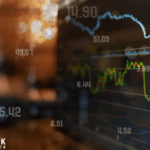Germany’s financial landscape is witnessing a surge in alerts linked to cryptocurrency. With digital currencies becoming increasingly integrated into global finance, Germany’s Financial Intelligence Unit (FIU) recorded an 8.2% rise in suspicious activity reports involving cryptocurrencies, even as the general number of such reports declined. This trend underlines growing concerns about the prevalence of illegal activities facilitated through digital assets. The financial ecosystem continues to grapple with balancing innovation with robust oversight.
Why Are Crypto Reports Increasing?
Suspicious activity reports from German financial entities related to cryptocurrencies like Bitcoin, Ether, and XRP have surged to 8,711, according to the FIU. Despite a general decline in overall suspicious activity reports across the financial sector, cryptocurrency-related notifications continue to rise. This situation points to specific risks associated with digital currencies, particularly on trading platforms and gambling sites, highlighting an urgent need to strengthen monitoring mechanisms.
How Does This Compare to Global Trends?
Globally, concerns over crypto fraud mirror the situation in Germany. A recent FBI report noted a 66% rise in cryptocurrency-related losses to $9.3 billion in 2024. Factors like investment scams and the exploitation of cryptocurrency ATMs contribute to these figures. Such data indicates that fraudulent script across international borders, necessitating concerted international efforts to combat cryptocurrency fraud effectively.
Comparing past trends, the rise in crypto-related suspicious activities is consistent with global patterns of increased scrutiny on crypto markets. Previously, reports typically focused on money laundering; however, the evolution of these financial assets requires broader vigilance encompassing various illegal activities. This situation suggests that digital currencies are a long-term fixture, with a need for comprehensive frameworks to address the associated risks.
In a related development, Circle’s recent IPO underscores a shift in the perception of digital finance. The move signifies rising confidence and interest among institutional players, as major banks participated in underwriting the listing. Circle’s public debut is driving new conversations about the potential for stablecoins within the traditional financial landscape.
By listing on the New York Stock Exchange, Circle also provides enhanced transparency for its financial operations, introducing a possible new standard for oversight in the stablecoin sector. Investors are now privy to detailed quarterly earnings, offering unprecedented insight into the company’s operations.
The expanding gaze on cryptocurrency comes at a critical juncture. Observing Germany’s increased alerts and Circle’s strategic moves indicates that while digital currencies hold significant promise, they need stringent regulation and scrutiny to ensure safe integration within the global financial structure. Awareness and preparation among financial institutions and regulators can foster a more secure environment for digital asset transactions.










